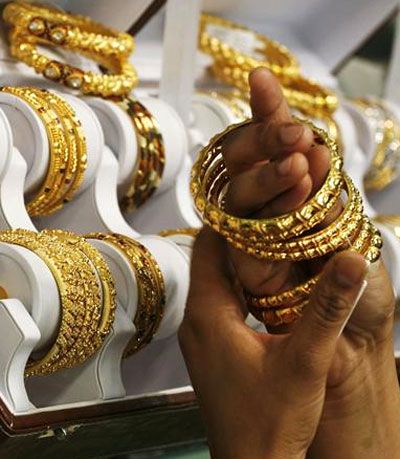India’s gold import bill, estimated at $3 billion in May, is seen falling further this month
 If gold import trends so far are anything to go by, India’s domestic demand for the yellow metal might decline in the April-June quarter, after seeing a 15 per cent increase in the three months ended March. Thanks to estimated gold imports of only around 60 tonnes in May, the total for the current quarter is expected to fall below 200 tonnes, for the first time in five quarters.
If gold import trends so far are anything to go by, India’s domestic demand for the yellow metal might decline in the April-June quarter, after seeing a 15 per cent increase in the three months ended March. Thanks to estimated gold imports of only around 60 tonnes in May, the total for the current quarter is expected to fall below 200 tonnes, for the first time in five quarters.
This trend might allay Reserve Bank of India (RBI) Governor Raghuram Rajan’s concerns, raised during the central bank’s monetary policy review last week. Rajan had said: “Gold imports spiked in the month of March and remained elevated in April, owing to festival demand and regulatory relaxations. Notably, the volume of imports has been recording increases, despite the value decline.” With imports beginning to moderate now, RBI’s concerns might have been partially addressed.
The gold market has already entered a lean season. While urban consumers have largely stayed away from bullion, gold demand among rural consumers is also likely to remain low, given an uncertainty over kharif crop amid weak monsoon projections this year. Earlier, rabi output had also been dismal after hailstorm damaged standing crop.
According to a banking official tracking gold imports “import bill in May could be around $3 billion. This means imports could be around 60 tonnes. With market price quoted at a discount of $3-4 per ounce in Mumbai, imports seem to be losing attractiveness. So, imports in June could be below even the May level.”
Gold imports had stood at 178 tonnes in the January-March quarter of 2014-15 and exceeded 200 tonnes in each of the four preceding quarters, shows data compiled by the World Gold Council. Among reasons for a decline in demand are seasonal slowdown after the wedding season and a general apathy amid a bearish gold price outlook.
“If monsoon remains weak, as forecast by the India Meteorological Department, the gold demand will remain weak. Deficient rains are feared to dent sentiment because the rural population accounts for 60 per cent of India’s total gold demand. Weak rainfall might adversely affect the agricultural output which, in turn, could affect gold buying,” said Ajay Kumar Kedia, commodity advisory, Kedia Commodity.
Investors have been selling gold globally, too. This is reflected by the fall in SPDR Gold Trust, the world’s largest gold exchange-traded fund. The ETF has slipped to its lowest since September 2008, the start of a global economic slowdown after Lehman Brothers filing for bankruptcy. In 2014-15, India’s gold import bill had stood at around $34 billion. But it is expected to be around $8.5 billion in the first quarter of the current year.
According to most analysts, the outlook for gold price remains bearish. The international prices are expected to test the support level of $1,170 an oz. Below this level, there will be the long-time support level of $1,140 and then $1,050.
Natixis commodities, a London-based commodities research house, has said in a recent report that rising bond yields should be watched, as a growing US economy and the possibility of the US Federal Reserve raising rates in September will bring down interest in gold. If bond yields come down up and the equity bubble burst, investors will again be attracted to gold.








